
South East Asia Loop Itinerary
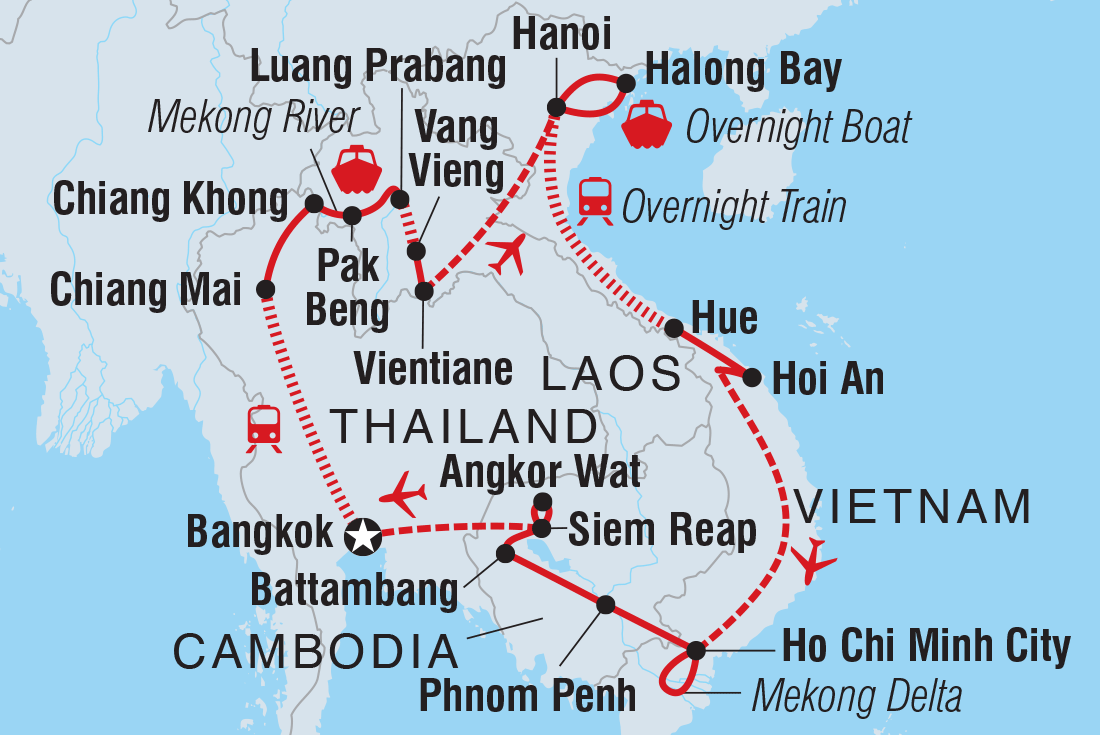


Sa-wat dee! Welcome to Thailand. Your adventure begins in the bustling capital of Bangkok, famous for its tuk-tuks, khlong boats and street vendors serving up delicious local food. You’ll have a welcome meeting at 6 pm to meet your local leader and group of fellow travellers. It’s recommended you arrive a few days early to explore the city – uncover the Chinatown area, visit the Grand Palace and the Temple of the Emerald Buddha, wander down Khao San Road, indulge in a Thai massage or see the backstreets of Bangkok by bike on an Urban Adventure. After the meeting tonight, maybe tuck into some into world famous street food for dinner.
Begin the day with a river cruise down the Chao Phraya River to explore the famous Khlongs (canals). Life along these canals seems a world away from the chaotic streets of the capital. Visit Wat Pho – one of the Bangkok temples, with a 46-m-long gold-plated Buddha reclining inside. Even the feet of this statue are incredible, 3 m long and intricately decorated with mother of pearl. The temple grounds are equally fascinating, filled with beautifully decorated stupas, halls and shrines. This evening you’ll head north to Chiang Mai on an overnight train journey.
The most vibrant city in northern Thailand, Chiang Mai has many famous temples and an interesting old city area. When you arrive, embark on a scenic, winding drive to one of the country's most stunning temple complexes – Doi Suthep. A 300-step naga-guarded stairway leads you to the temples, and the climb is well worth the effort. Take in the hypnotic atmosphere of chanting Buddhist monks and the sweeping views over the city. After making your way back down, you’ll check into your hotel and have a free afternoon and evening to explore. Maybe wander through the Night Bazaar or relax at a restaurant along the riverfront. Make sure to sample some traditional northern Thai food – the signature dish is kao soy (yellow wheat noodles in a curry broth, traditionally served with chicken or beef).
Today, you’ll have a pretty special time visiting the ChangChill elephant experience. Take a 1.5-hour drive out of Chiang Mai to ChangChill, where you’ll begin to learn how this organisation supports the protection, conservation and lifestyle of free roaming elephants in the region. You’ll observe the daily patterns of these jungle giants from a safe distance, seeing how they graze and socialise with their other friends. The expert local guides will be able to give you a ‘live lecture’ on the elephants themselves, its sustainable tourism practices and conservation efforts in the area. Enjoy some refreshments nearby the elephant’s mud pit but be careful not to get a spray! Be treated to some lunch in a riverside sala (pavilion) alongside your giant friends, who will be enjoying a meal too. Return to Chiang Mai where the rest of the time is at leisure.
Take a journey through rural countryside to the Thai border town of Chiang Khong. On the way, visit privately owned Wat Rong Khun, more commonly known as the White Temple – a must visit in Chiang Rai. This contemporary temple is constantly being updated, and its strange design references to Buddhist mythology, human sin and pop culture icons such as Michael Jackson, Harry Potter and Superman. Formerly known as Juon, riverside Chiang Khong remains an important market town for the surrounding hill tribes and for trade with Laos. Stretch your legs with a stroll around town, then maybe continue to Wat Phra Kaew and Wat Luang. Tonight, why not enjoy a final Thai drink and dinner, while Laos beckons from across the mighty Mekong.
After crossing into Laos, you’ll be joined by additional Laos guides (a local government requirement). Board a slow boat for the 2-day journey down the mighty Mekong River to Luang Prabang. The journey is relaxed, so you can experience the slow pace of village life and the breathtaking scenery along the river up close. The river boat is basic in nature, with a toilet, covered roof and open sides to take in the fresh air. There are seats in the front of the boat and a small open area in the back where you can have a nap on the mat, play cards, read or have lunch. Dock at the small town of Pak Beng to spend the night. Hmong and tribal Thai people are frequently seen on the main streets, where vendors sell local textiles and handicrafts.
Reboard the boat and cruise to the Pak Ou Caves – an important religious site overlooking the river at the junction of the Mekong and Ou Rivers, consisting of two sacred limestone caverns filled with Buddha images of all styles and sizes. The lower cave, known as Tham Ting, is entered from the river by a series of steps and can easily be seen in daylight. The higher cave, Tham Phum, is deeper and requires a torch for viewing. Continue to the former royal capital of Luang Prabang. This UNESCO World Heritage-listed city is a favourite of many travellers, sitting in the hills of northern Laos on the confluence of the Mekong and Khan rivers. The city is claimed to be ‘the best-preserved city in South East Asia’ by UNESCO. Stay in a hotel tonight and if you’re feeling energetic, maybe climb Mt Phousi for some sunset views. You can climb the 328 zigzag steps up to the sacred gilded stupa and big drum of the Phu Si Temple for a panoramic view of Luang Prabang and its surroundings.
Once the heart and soul of the ancient Lao Kingdom (Lan Xang) and designated a UNESCO World Heritage site in 1995, Luang Prabang is endowed with a legacy of historic, red-roofed temples and French Indochinese architecture. Today, head to Kuang Si Falls – a multi-level cascade of bright blue pools. After a swim, visit a local social enterprise that supports and trains local women in weaving. Aiming to empower, while also preserving the traditional skill of making Laos textile, this enterprise will teach you about their work as you have a drink by Mekong River.
Rise with the sun this morning and witness a traditional alms giving ceremony. View the procession of saffron-robed monks on their daily outing collecting food offered by devotees (a practice that dates back centuries). The offerings must be collected early, as the monks cannot eat anything after midday. By giving food to a monk, it is believed you ‘het bon’ (make merit) which will be carried over into the next life. Your leader will guide you through the dos and don’ts and help you to take part. The rest of the day is yours to spend at leisure in this idyllic town.
Take a high-speed train to Vang Vieng. Situated on the Nam Song River, Vang Vieng is surrounded by towering limestone karsts and is a great place to enjoy being surrounded by nature. After checking in to the hotel, use tonight to plan out your next few days with your group and leader.
There’s plenty to do in and around Vang Vieng, known as an adventure town thanks to its unique and varied surrounding country. The area is renowned for its caves, many of which are easily accessible from the town. Perhaps the most famous is the cave of Tham Chang – a beautiful cavern fed by a natural spring, making it a perfect spot for a swim. Hire bicycles to explore further afield, hike the trails to nearby lookout points, join a daytrip to go kayaking on the river, or visit an organic mulberry farm just outside town.
Continue by private minibus to the country's capital, Vientiane – possibly Asia's most laidback capital. Vientiane has a wealth of cultural delights to discover on foot, or by jumbo (tuk-tuk). Faded mansions, tree-lined boulevards and old temples create an atmosphere of timelessness, particularly in the older part of town along the Mekong River. Visit Wat Si Saket – the oldest temple still standing and home to almost 7000 Buddha images. Visit COPE visitors centre – an organisation dedicated to assisting those who have been injured by the multitude of unexploded ordinance across the country. This is an excellent cause and a chance to educate yourself about Laos' devastating war history as well as buy a snack or drink from their Karma Cafe. This evening, maybe join your fellow travellers for dinner and celebrate a trip well travelled.
Say goodbye to Laos today as you'll be transferred to the airport for your flight to Hanoi. A driver will wait for you and take you from the airport to your hotel in Hanoi. You’ll have some free time to explore at your own pace before your next welcome meeting at 6 pm to meet your new group and leader. Consider booking an urban adventure tour if you have time or maybe take it at your own pace and wander the Old Quarter to admire the city’s French architecture. After the meeting, head out to dinner at KOTO restaurant. This organisation is dedicated to developing the hospitality careers of disadvantaged youth.
Travel by private minibus to the UNESCO World Heritage-listed Ha Long Bay, which is dotted with sandy coves, grottoes and 1600 limestone islands, formed over millennia by wind and water erosion. Board a private boat and cruise the bay, exploring Surprise Cave and Ti Top Island Beach. If you like, you can also take on an optional kayaking tour of the bay and see the gorgeous natural scenery from a different perspective. Spend your evening aboard the boat beneath the night sky, watching as the stars come out and maybe grab a drink at the restaurant bar, getting to know your fellow travellers a little better.
Wake up on the waters of Ha Long Bay and maybe watch the sunrise as the eagles soar overhead. Then, you’ll visit The Green Life Centre, which is committed to turning the bay’s trash into treasure by collecting discarded items and skilfully turning them into handicrafts. Meet the team behind this important cause and learn how to transform rubbish into a reusable bag, a scrunchie or a makeup case. After return to Hanoi by bus. Arrive late this afternoon and enjoy a free afternoon until tonight’s train voyage. Be sure to grab a bowl of pho while you’re in town and slurp down this local specialty made from broth, noodles and meat. Maybe chill by Hoan Kiem Lake until you board an overnight train to Hue this evening.
Arrive in Hue this morning and transfer to your hotel. Once the imperial capital of Vietnam, Hue holds the treasures of the country’s royal past. Enjoy free time in the morning to rest or explore – you could check out the bustling Dong Ba Market to sample some of the specialties that once graced the Nguyen emperors' tables. Reunite with the group to visit the war-damaged ruins of the Imperial Citadel – a sprawling city-within-a-city which contains the remains of temples, state houses and the emperor’s palace.
See Hue like a local today – from the back of a motorbike! Straddle the saddle and whiz around town with a local guide, taking in historic and contemporary sights along the way. Stop at Thanh Toan to see the 18th-century covered bridge and villagers shopping at their local market. Visit the 17th-century active Buddhist monastery of Thien Mu Pagoda and see the car that belonged to Thich Quang Duc – the monk who self-immolated in 1963 in protest against the treatment of Buddhists by the South Vietnamese regime. For lunch, sit down to a vegetarian feast in a nunnery. Finish at the lakeside royal tomb of Emperor Tu Duc before heading back to town.
This morning, take the bus through coastal rice paddies and the spectacular Hai Van Pass. After a photo stop on the way, arrive in Hoi An – recently declared a UNESCO World Heritage site, Hoi An was a major international trading port during the 17th, 18th and 19th centuries. Today, parts of the beautifully preserved town retain the feel of centuries past. This is also a very popular town for shopping, famous for its many tailors. When you arrive, your leader will take you on a sightseeing walk through the Old Town to visit a handful of the city's major attractions. You’ll also be given a sightseeing pass so you can further explore select attractions at your leisure.
Today is a free day to explore Hoi An. Maybe browse the cobbled streets and art galleries or hire a bike and cycle through rice paddies out to Cua Dai Beach. Maybe browse for paintings, ceramics and colourful cloth lanterns in the town’s markets and preserved Chinese shophouses. If you’re craving a new look, you could visit to one of the hundreds of tailors and get an outfit custom made. Hoi An is also known for its delicious regional food, so you could have dinner a riverside restaurant or partake in a cooking class.
Today, you’ll take a short, early morning flight to Ho Chi Minh City. Formerly known as Saigon, Ho Chi Minh City has a fascinating history and is arguably Vietnam’s capital of commerce and culture. After landing, take a sightseeing tour around the city by bus. Pass the Reunification Palace, Notre Dame Cathedral and the Opera House, then stop in at the War Remnants Museum to discover some of the sobering stories of the 20-year-long Vietnam/American War.
This morning, head out on a daytrip to explore the Mekong Delta. Board a private boat to Ben Tre to visit the coconut gardens and stop at a local home to sample tropical fruits and coconut jams. After, paddle in sampans (small rowing boats) past coconut trees along the Mekong Delta. Take a tuk-tuk tour around the villages and learn about rural life and the industry created around coconut products like brooms and coconut fibre mats. Eat lunch at a restaurant in the heart of the Delta, sampling regional specialties like elephant ear fish. After, return to Ho Chi Minh City and maybe grab dinner with your fellow travellers to toast to a great adventure!
Enjoy a free day in Ho Chi Minh to get out and discover the city at your own pace. Alternatively, why not get an up close and personal history lesson on guerrilla warfare during an Urban Adventures tour to the Cu Chi tunnels. This underground network in the middle of the jungle was used by the Viet Cong during the war. Take the chance to climb into the tunnels and imagine what it would’ve been like to eat, sleep, work and cook – even go to school underground as conflict raged above. Return to Ho Chi Minh where there will be a meeting at 6 pm to welcome any new travellers joining you on the next stage of your adventure. After, perhaps get to know your new travel buddies over an optional group dinner.
Travel by public bus across the border, through rural Vietnam and Cambodia to Phnom Penh. Cambodia's capital city is set on a major junction of the Mekong and Tonle Sap rivers and boasts some fine examples of French-inspired architecture. If you're looking for a tasty beverage when you arrive, head for a mojito on the rooftop. Or if you're in the mood for shopping, stop in at the art-deco Psar Thmei (Central Market) or travel out to Psar Tuol Tom Pong (the Russian Market) for the best range of local souvenirs.
Today, you’ll confront Cambodia's tragic past on a guided tour of the Tuol Sleng Genocide Museum (S21) – a former school which served as a Khmer Rouge torture centre. It's estimated that more than 20,000 people were held and tortured here. You’ll also head out to the Killing Fields of Choeung Ek, where a stupa made up of some 8000 human skulls marks the execution ground for the torture victims of Tuol Sleng. After, you may wish to learn about a brighter period in Cambodian history from an optional visit to the Royal Palace and Silver Pagoda. Wat Phnom, shrouded in myth, is equally worth a visit, as is the National Museum with its excellent Khmer collection. Cyclo tours around the city are a great alternative to walking and generally include the Central Market, US Embassy, Wat Phnom, Mekong riverfront, the Independence Monument and Royal Palace.
Travel by private minibus to Battambang today. Break up an otherwise long trip with a visit to the pottery visit in Kampong Chhnang and learn about the craft of pottery making at local workshops. Then continue to Cambodia's second-largest city – a pretty riverside town with French elegance, friendly Khmer people and beautifully preserved colonial architecture, this is a great place to explore on your own. Why not take part in an optional cooking class to learn the secrets of local dishes such as amok, Khmer curry and fried spicy chicken.
Spend a bit of time riding around the countryside by bike, travelling out to the rural villages around Battambang. This is a great opportunity to get a closer look at what rural life means in Cambodia. Visit local families who have been producing agricultural products the traditional way passed down through generations, like rice paper, dried bananas, and bamboo sticky rice and stop by a Khmer house and relax and enjoy some coconut water while chatting about their life. The Intrepid partner for this activity is a local social enterprise that support training of local youth for their future career. In the afternoon continue by private minibus to Siem Reap, arriving in the evening, and relax as you prepare for your much-anticipated visit to Angkor tomorrow. Perhaps hit the markets for some delicious street food for dinner.
Make your way to Angkor Wat in the early hours this morning to watch the sunrise over this UNESO World Heritage site. Then, Temple-hop with your local guide through the world-famous complex. The temples, dating back as far as the ninth century, were believed to represent the cosmic world and were set in perfect balance, symmetry and composition. The intricately carved bas-reliefs and architectural designs are mind-blowing and there are spectacular photo opportunities at any time of day. The ruins are scattered over an area of some 160 square km, but the main cluster of temples is close to Siem Reap, so there will be plenty of time to fully appreciate the great archaeological sites of Angkor Wat, Bayon and the jungle-covered Ta Prohm.
Continue your explorations of the Angkor complex this morning. In the afternoon, embark on a private local boat discover the floating villages and local daily lives at Chhong Kneas – a trading port of agricultural products on the edge of Tonle Sap Lake, also known as the Great Lake of Cambodia.
Fly from Siem Reap to Bangkok today. On the flight, you’ll be unescorted, but your Cambodian leader will see you off at the airport in Siem Reap and your Thai leader will be ready to welcome you in Bangkok. Thailand's bustling capital is an exciting world of tuk tuks, khlong boats and street vendors serving up delicious Thai food. Perhaps head out to sample some local specialties as a final farewell with your fellow travellers.
Your trip comes to an end this morning, with no further activities planned. However, if you have more time, Bangkok is full of things to do, including the Grand Palace, Temple of the Emerald Buddha, and the fascinating Jim Thompson Museum. Just speak to your booking agent if you'd like to extend your stay.

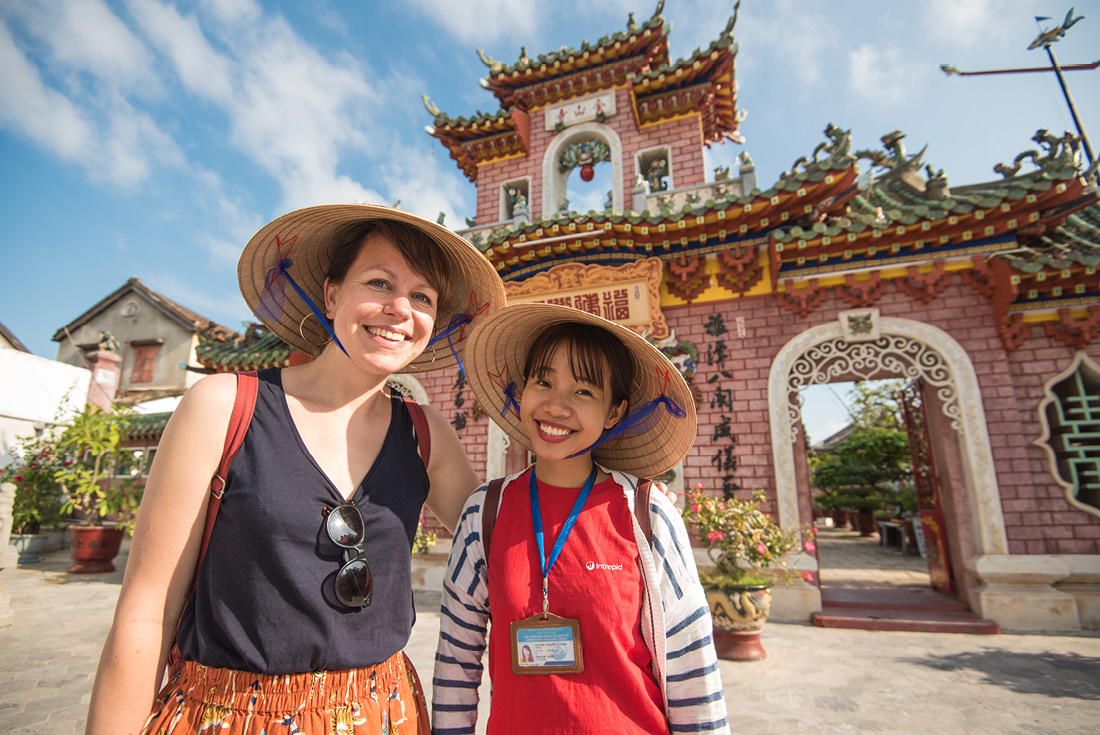
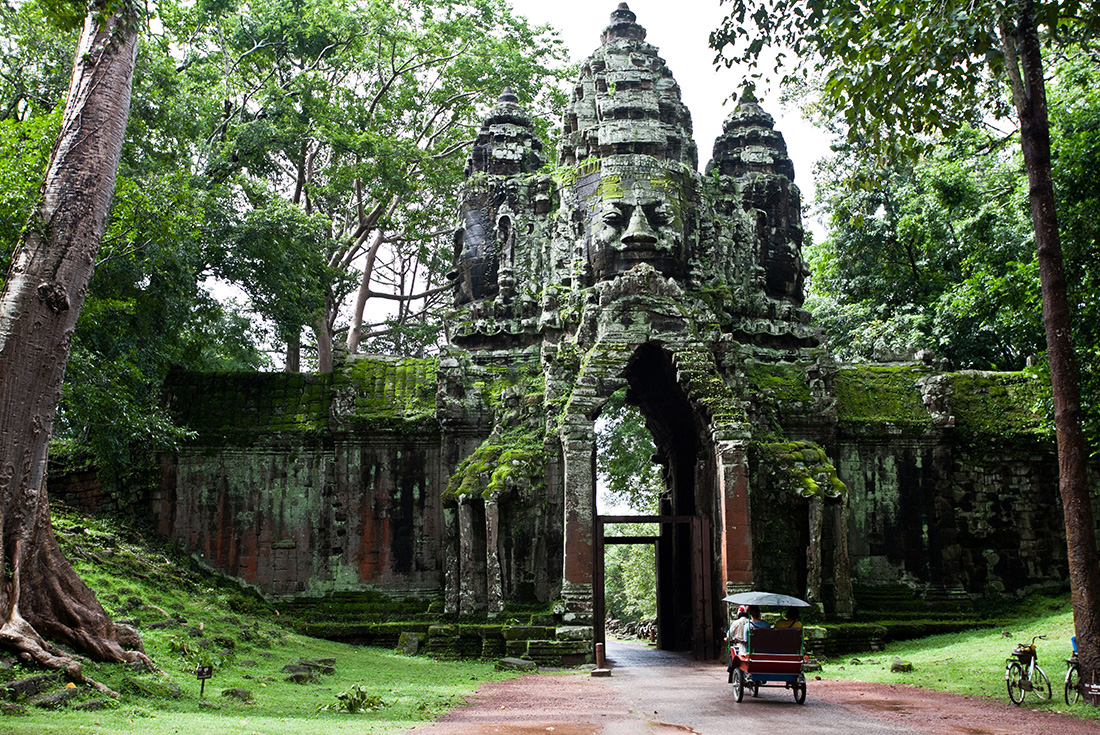

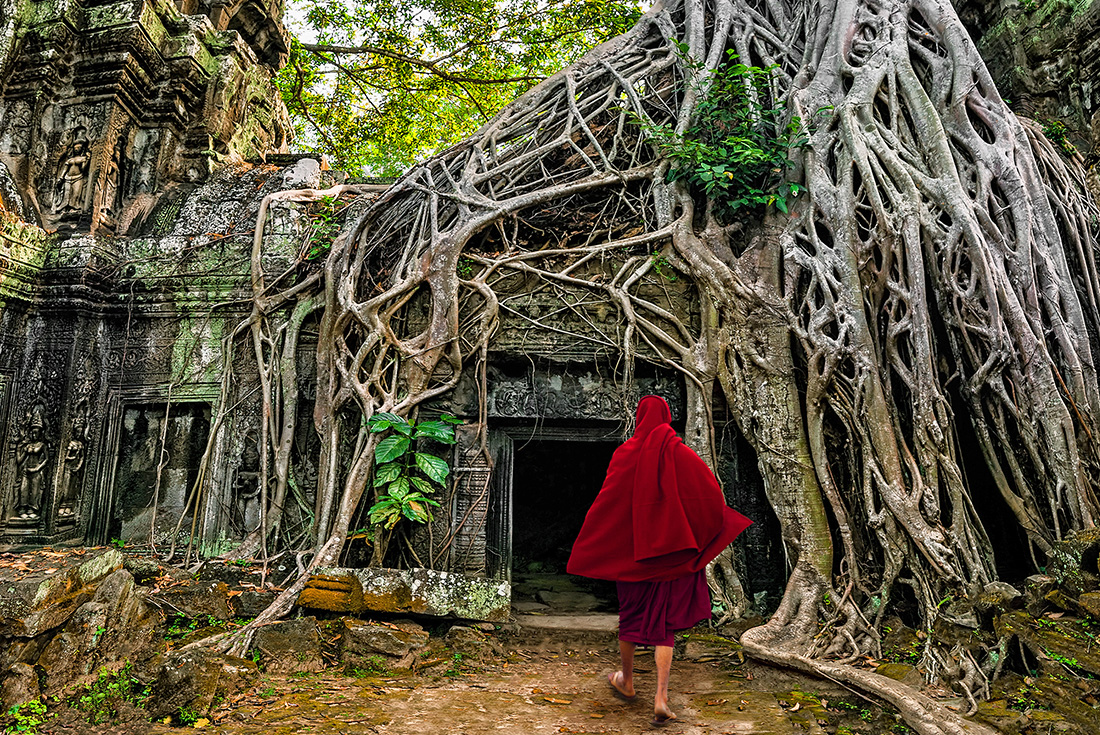
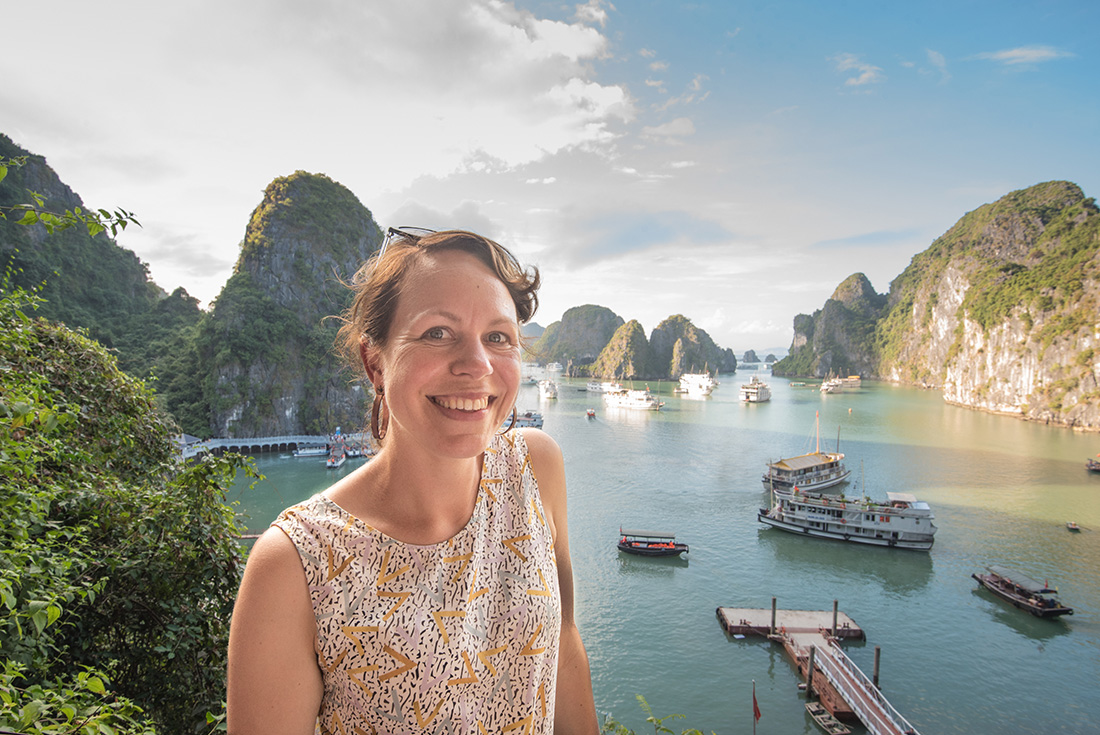

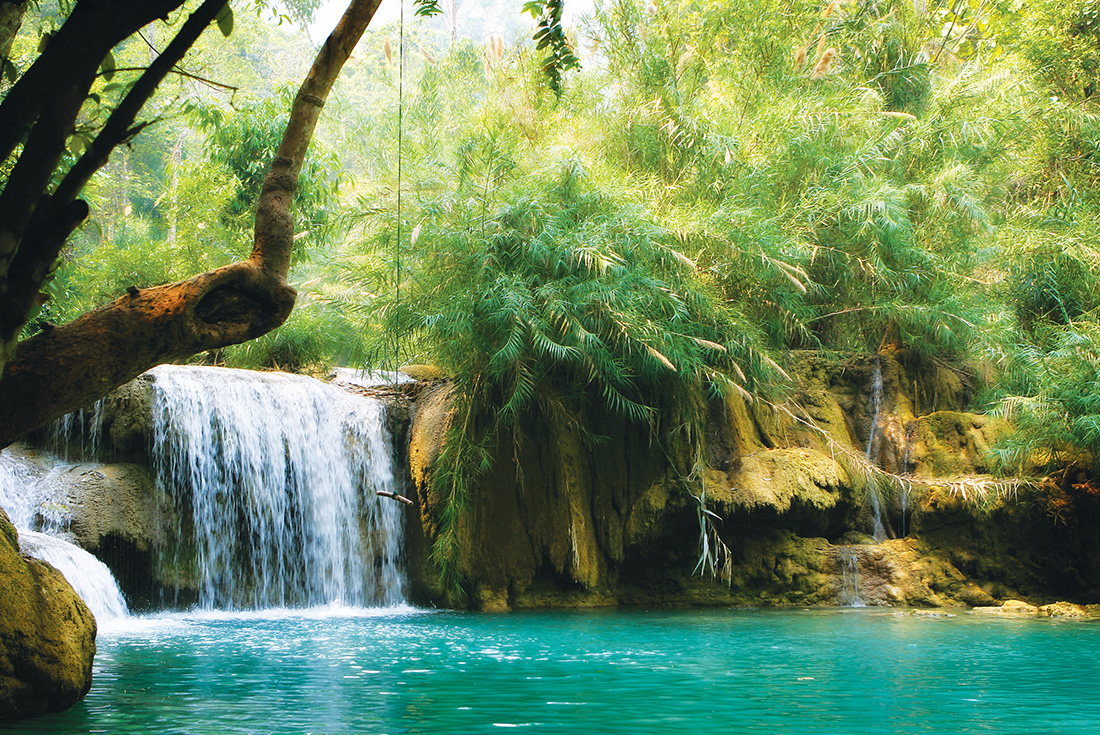
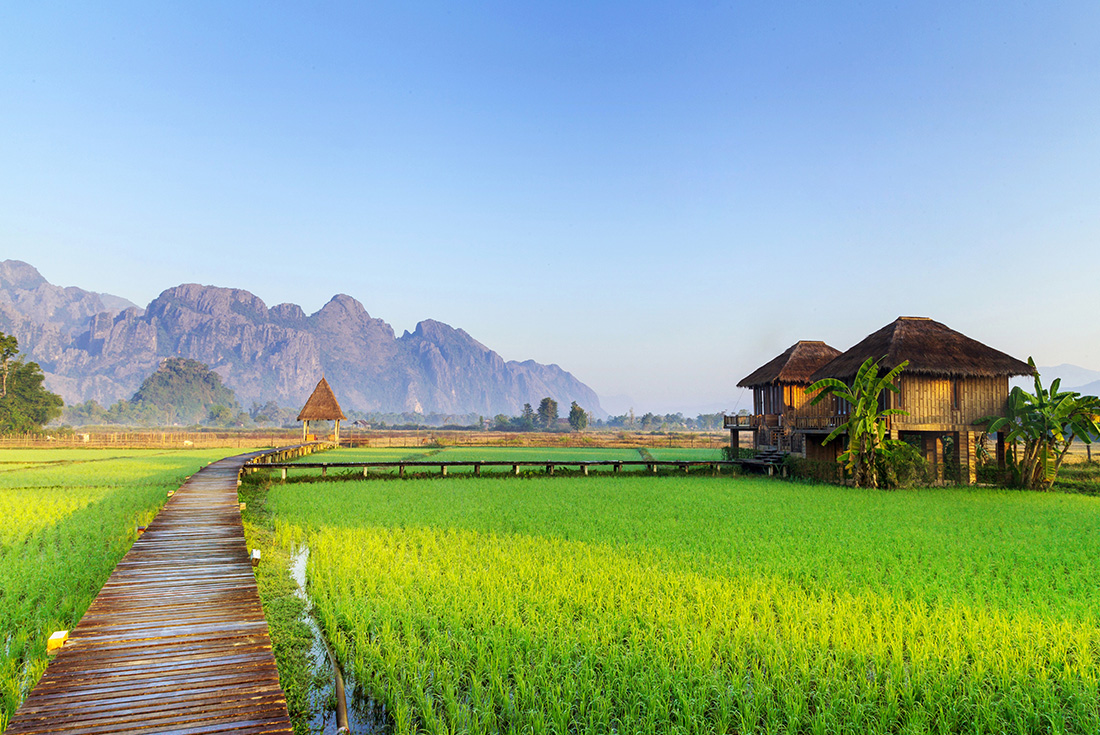

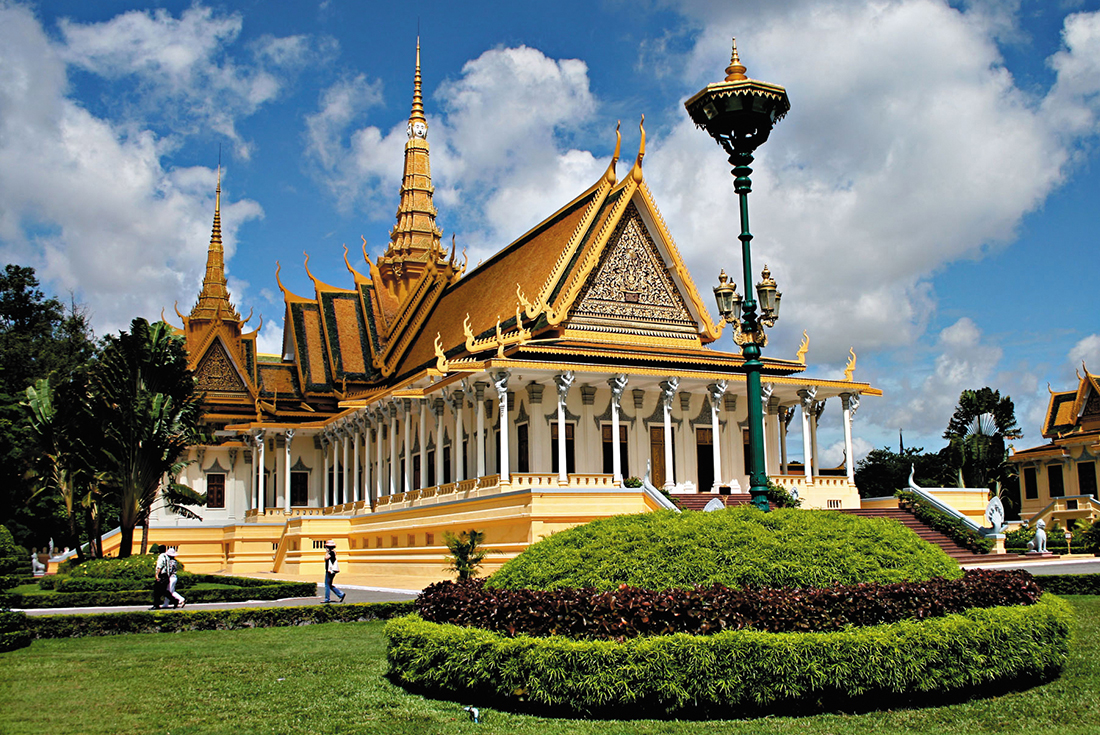

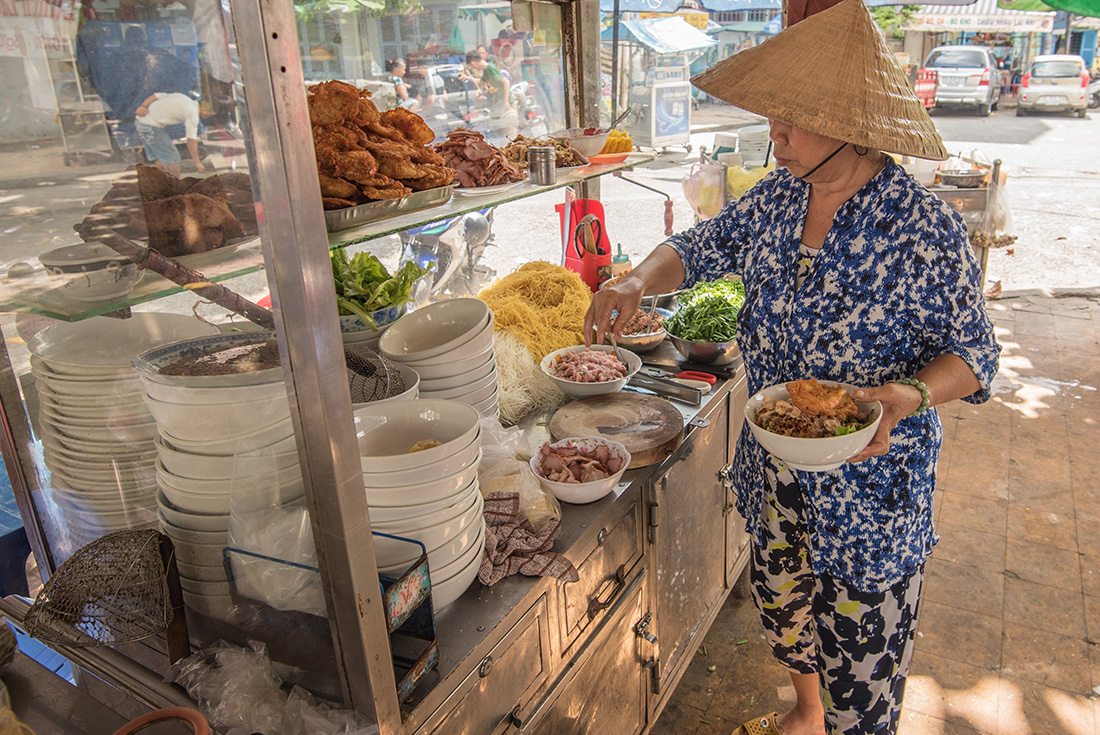
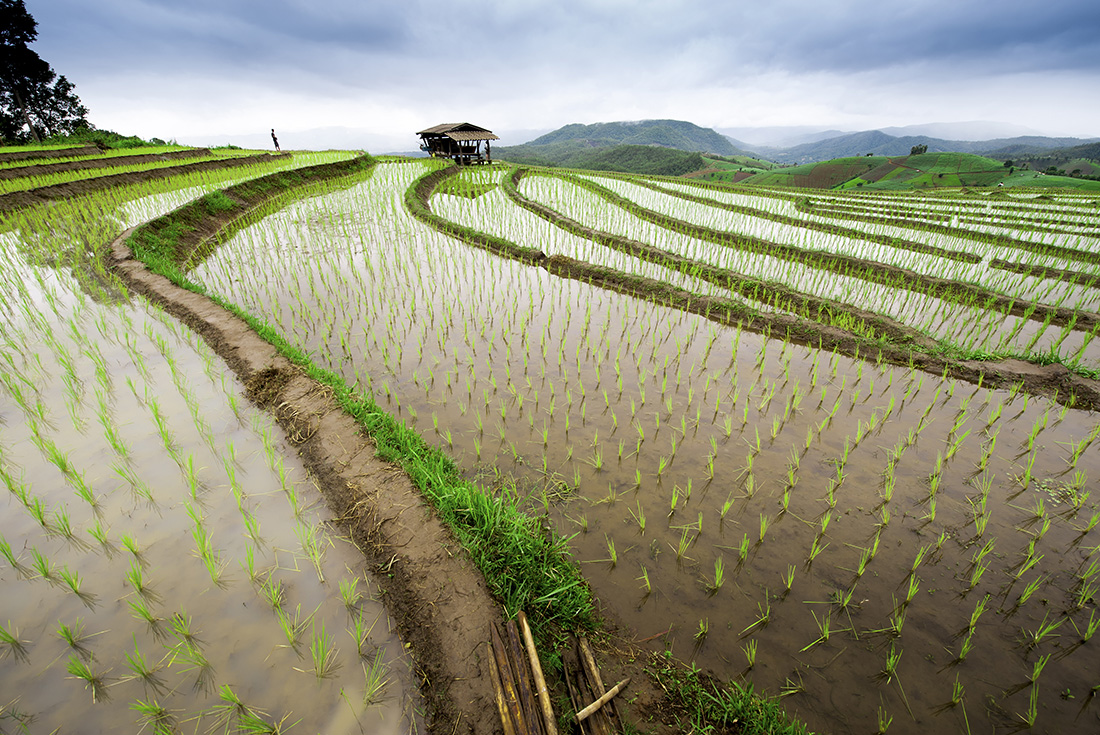
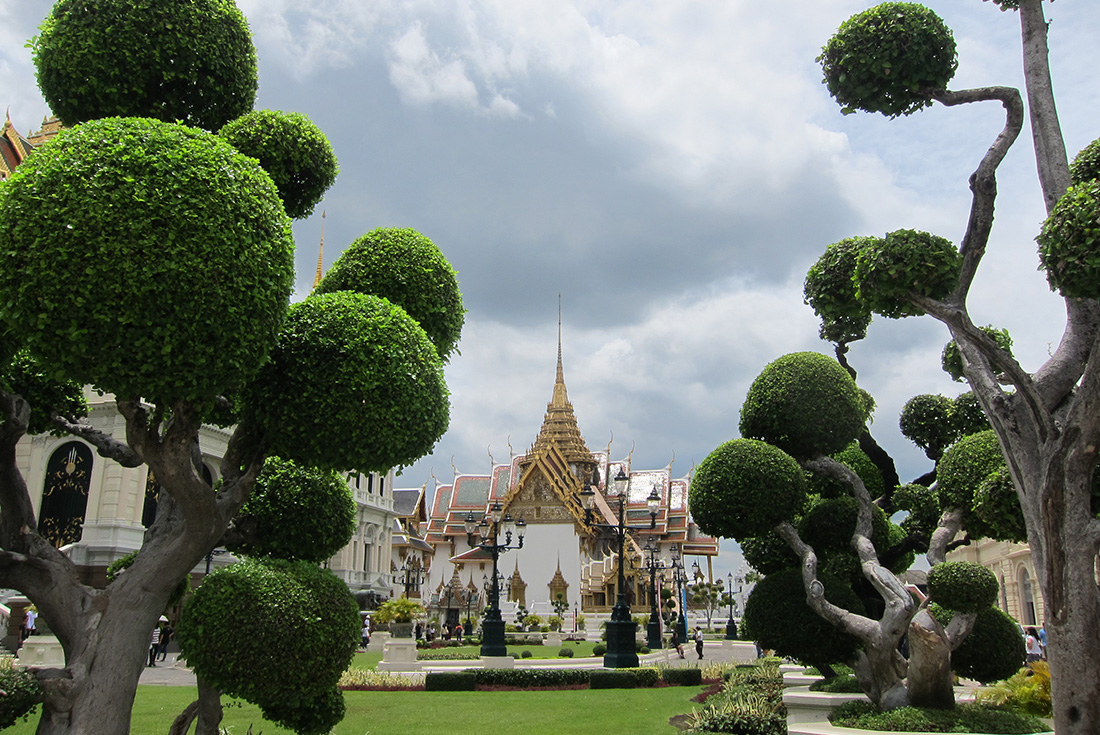
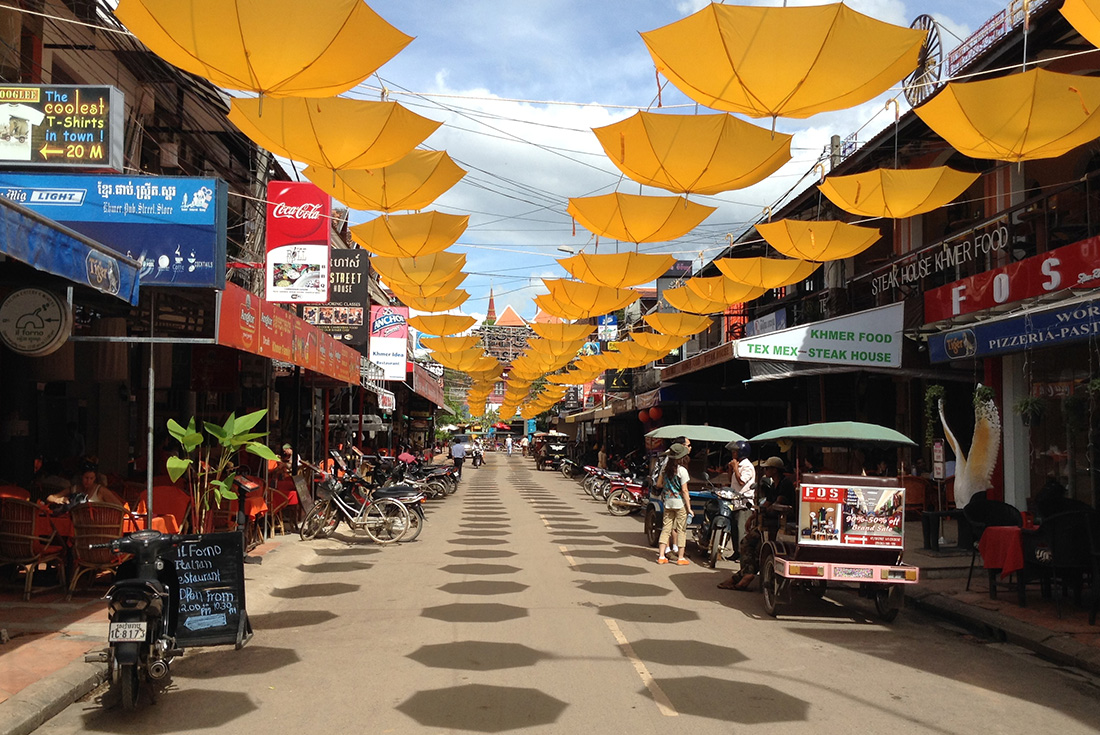
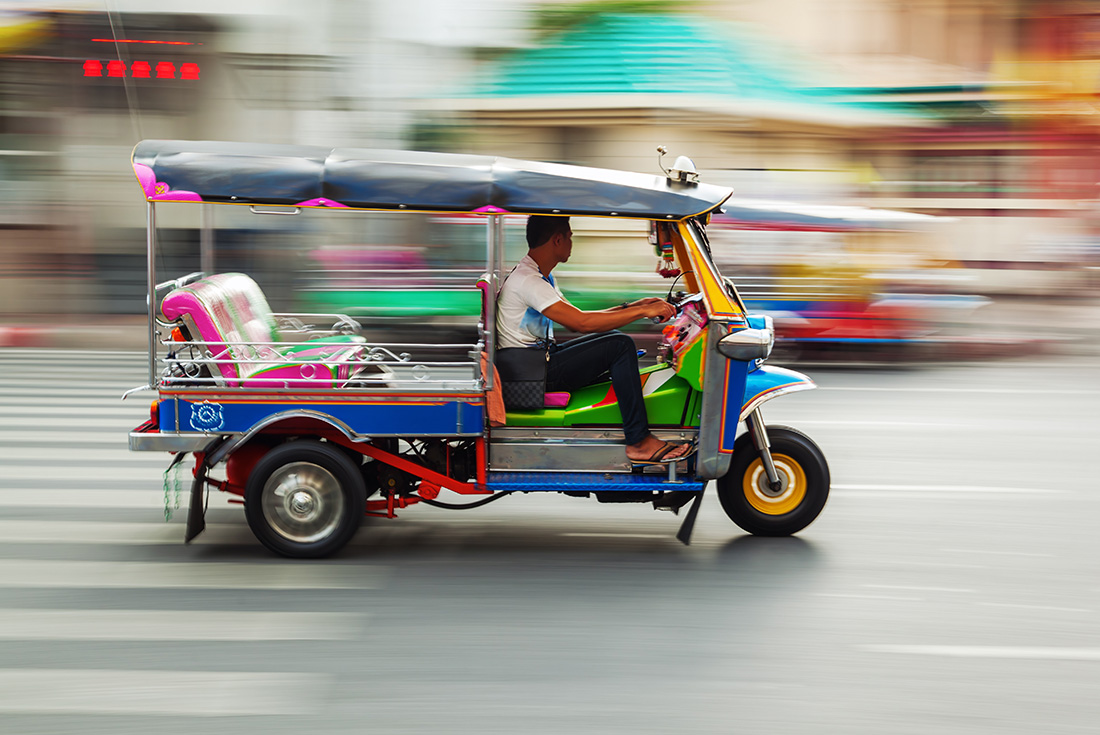
Bangkok - Khlong boat canal tour
Bangkok - Wat Pho
Chiang Mai - Doi Suthep Temple Complex
Chiang Mai - ChangChill Elephant Sanctuary
Chiang Rai - Wat Rong Khun (White Temple)
Mekong River - 2 day boat trip
Luang Prabang - Pak Ou Caves
Luang Prabang - Kuang Si Waterfalls
Luang Prabang - Weaving workshop and social enterprise visit
Luang Prabang - Alms giving ceremony
Vientiane - COPE visit
Vientiane - Wat Si Saket
Hanoi - KOTO dinner
Halong Bay - Overnight Boat Cruise
Halong Bay - Cave entry
Halong Bay - The Green Life Visit
Hue - Imperial City entrance and guided visit
Hue - Royal tomb of Emperor Tu Duc
Hue - Highlights & back streets tour by motorbike
Hue - Thien Mu Pagoda
Hue - Vegetarian Lunch at Pagoda
Hoi An - Old Town walking tour
Ho Chi Minh City - War Remnants Museum
Ho Chi Minh City - City tour
Mekong Delta - Mekong Delta Day Trip & Village Tuk-Tuk Tour
Mekong Delta - Lunch
Phnom Penh - The Killing Fields of Choeung Ek
Phnom Penh - Tuol Sleng Genocide Museum (S21)
Kampong Chhnang - Pottery village visit
Battambang - Soksabike social enterprise countryside cycling & local snack tour
Siem Reap - Three day Angkor Pass
Siem Reap - Angkor Temples Guided Tour
Siem Reap - Sunrise at Angkor Wat
Siem Reap - Angkor Temples Guided Tour
Chong Kneas - Tonle Sap floating village visit
Discover the incredible Angkor Wat. As well as a guided tour, you'll also have a pass to cover your whole time in Siem Reap, so you can explore this UNESCO World Heritage temple complex as much and as often as you like!
Take a two-day boat journey down the iconic Mekong River, passing incredible rural scenery – this is one of the must-dos to truly experience South East Asia.
Immerse yourself in the Laos vibe with ample free time in Luang Prabang and Vang Vieng, perfect places for you to take it easy, relax and DIY your own adventure.
Sample local food wherever you go, from a seafood dinner on Ha Long Bay, street snacks at markets, a meal at a buddhist nunnery, coconut candy and tropical fruits in the Mekong Delta and dinner at KOTO restaurant.
Learn about local culture in Kampong Luong and in the countryside around Battambang with a visit to a floating village and a bike ride around farms and cottage industries.
ASAI Bangkok Chinatown, 531 Charoen Krung Rd, Khwaeng Pom Prap, Pom Prap Sattru Phai , Bangkok, 10100, THAILAND, Phone: +66 22208999
ASAI Bangkok Chinatown, 531 Charoen Krung Rd, Khwaeng Pom Prap, Pom Prap Sattru Phai , Bangkok, 10100, THAILAND, Phone: +66 22208999
1. A single supplement is available if you’d prefer not to share a room on this trip. The single supplement excludes Day 2,15 (Sleeper Train), Day 5,6 (Guesthouse) and Day 14 (Overnight Boat) where you will be in shared accommodation and is subject to availability. Please speak to your booking agent for further information.Rooms booked only for day use are also excluded.Please note that some room configurations have two single beds, although a double bed will always be requested.
2. Please provide your full name exactly as per passport (including any middle names listed on your passport) and your passport number no later than 45 days prior to your departure for flight ticket booking for your trip. If you are booking your trip between 45 and 30 days prior to your departure date, please provide your passport details asap for us to secure your flight ticket within the trip. Additional fees may apply if details provided are incomplete or incorrect.
3. For flights within the trip - checked luggage allowance is a maximum of 20 kilograms, plus up to 7 kilograms carry-on luggage. Any excess luggage charges will need to be paid directly to the airline at check-in.
4. As this is a combination trip, your tour leader and group composition may change on Day 13 and Day 22.
5. Thailand is going through a mourning period for the Queen Mother’s passing on 24Oct, 2025. This will last until 24Jan, 2026. The government has announced the recommended attire for visitors during this period and please refer to the Responsible Travel section in the Essential Trip Information for more details.
While we always endeavour to provide the best possible holiday experience, due to the nature of travel and the areas we visit sometimes things can and do go wrong. Should any issue occur while you are on your trip, it is imperative that you discuss this with your group leader or local representative straight away so that they can do their best to rectify the problem and save any potential negative impact on the rest of your trip.
We recognise that there may be times when your group leader or local representative may not be able to resolve a situation to your satisfaction - if this is the case, please ask the group leader or local representative to speak to their direct manager.
You may also choose to provide details in your online feedback, which we ask you to complete within 30 days of the end of your trip. Please do be aware that it is very difficult for us to provide any practical help after the trip is completed, so informing us while still travelling will give us the opportunity to resolve the issue in real-time., For general contact details please use the following page: https://www.intrepidtravel.com/contact-us, In case of a genuine crisis or emergency, you can reach our local office on the numbers below:
, Available for phone call or WhatsApp call on +855 92 555 969, Available for phone call or WhatsApp call on +66 89 810 3722, Intrepid local operator : Available for phone call on: +84 90 311 7770
You'll cover a lot of distance on this trip, including on overnight trains. Accommodation and amenities are shared and basic, but the experience of rubbing shoulders with the locals makes it all worthwhile. For more about what this experience is like, see our blog post here: https://www.intrepidtravel.com/adventures/what-to-expect-on-an-overnight, It can be surprisingly cool, especially at night from November to February. Make sure you have some warm gear packed for this period so you can be comfortable. Smoke haze can be common for Northern Thailand into Laos between March and April due to burning off season of crops. You may wish to take a quality mask with you if you are particularly sensitive to smoke., Depending on where you come from, the weather in Vietnam might be hotter and more humid than what you are used to. We recommend checking online for what the typical temperatures will be at the time of year you are looking to travel to see what to expect - this page might be useful: https://www.intrepidtravel.com/au/vietnam/weather-in-vietnam, Laos is less developed than many other South East Asian countries. The roads can be bumpy, delays are common, and accommodation can be basic but always clean and comfortable. A little bit of patience will go a long way towards your enjoyment of this beautiful country!, Due to dam construction upstream, water levels aren't as reliable as in previous years. When the Mekong River is at its lowest from February to April, part of the journey may occasionally need to be made by land, At times your accommodation may not have continuous hot water. Most travellers don’t find this a problem however, and are often keen to cool down from the heat with a refreshing cold shower!
Discover the incredible Angkor Wat. As well as a guided tour, you'll also have a pass to cover your whole time in Siem Reap, so you can explore this UNESCO World Heritage temple complex as much and as often as you like!, Take a two-day boat journey down the iconic Mekong River, passing incredible rural scenery – this is one of the must-dos to truly experience South East Asia., Immerse yourself in the Laos vibe with ample free time in Luang Prabang and Vang Vieng, perfect places for you to take it easy, relax and DIY your own adventure., Sample local food wherever you go, from a seafood dinner on Ha Long Bay, street snacks at markets, a meal at a buddhist nunnery, coconut candy and tropical fruits in the Mekong Delta and dinner at KOTO restaurant., Learn about local culture in Kampong Luong and in the countryside around Battambang with a visit to a floating village and a bike ride around farms and cottage industries.
All group trips are accompanied by one of our group leader or local representative. The aim of the group leader or local representative is to take the hassle out of your travels and to help you have the best trip possible. Intrepid endeavours to provide the services of an experienced group leader or local representative however, due to the seasonality of travel, rare situations may arise where your group leader or local representative is new to a particular region or training other group leader or local representative.
Your group leader or local representative will provide information on the places you are travelling through, offer suggestions for things to do and see, recommend great local eating venues and introduce you to our local friends. While not being guides in the traditional sense, you can expect them to have a broad general knowledge of the places visited on the trip, including historical, cultural, religious, and social aspects. At Intrepid we aim to support local guides who have specialised knowledge of the regions we visit. If you are interested in delving deeper into the local culture at a specific site or location then your group leader or local representative can recommend a local guide service in most of the main destinations of your trip.
TRAVEL ADVISORIES & ALERTS
We recommend that you check your government's foreign travel advisory for the latest information about the destination before you travel. You will also need to ensure that your travel insurance covers you for all destinations and activities on your trip. We also recommend saving the phone number for emergency consular assistance for your government’s consulate in the destination/s you’ll be travelling. Links to travel advisories and any current travel alerts for our trips can be found here: https://www.intrepidtravel.com/travel-alerts
PERSONAL SAFETY
Ensure you have a secure method of carrying your passport, phone, credit cards and cash while travelling such as a money belt. Leave all other high value items, including jewellery, at home Use safety deposit boxes at hotels to store your valuables when available and ensure your luggage is lockable. Be aware of the risk of pick-pocketing and petty theft. Exercise caution when walking at night, don’t walk alone and stick to well-lit streets wherever possible. Be vigilant on public transport and look out for your fellow travellers. Take precautions such as carrying your bag in front of you and never leaving personal items unattended.
LGBTQIA+ TRAVELLERS
Intrepid welcomes all LGBTQIA+ customers on our trips, however we operate in parts of the world that are less accepting. We support LGBTQIA+ customers to travel to these destinations and are committed to ensuring they face no discrimination on any part of the trip we control. We recommend you visit Equaldex (https://www.equaldex.com/) and your government's foreign travel advice for LGBTQIA+ travellers when choosing your trip., FIRE PRECAUTIONS:
Please be aware that local laws governing tourism facilities in this region differ from those in your home country and not all the accommodation which we use has a fire exit, fire extinguishers or smoke alarms.
SEAT BELTS:
Please be aware that local laws governing transportation safety may differ from those in your home country and not all the transport which we use is able to provide seat belts.
PETTY THEFT AND PERSONAL SAFETY:
While travelling there is always the risk of pick-pocketing and petty theft, particularly in the more touristy cities. We recommend that you exercise caution when walking alone at night and encourage you to walk together and only on main, well-lit thoroughfares. Be particularly vigilant on public transport. Simple measures like carrying your day pack on your front, not hanging your bag over the back of your chair or on the floor and wearing a money belt will reduce any chance that your valuables should go missing.
MOTORBIKE BAG SNATCHING:
Be particularly aware of motorbike bag snatching, especially in the bigger cities., BICYCLE HELMETS
Bicycle helmets are not provided on the optional cycling activity in Vang Vieng. If you wish to wear a bike helmet we recommend you bring one from home.
PASSPORT
You’ll need a valid passport to travel internationally and most countries require your passport to have a minimum of 6 months validity, so remember to check the expiry date.
We need your passport information to get everything ready for your trip so it’s important that the information on your booking matches your passport exactly. Please take care to provide the correct details. We recommend carrying a copy of the photo page of your passport while travelling and leaving a copy at home with family or friends.
VISAS & ENTRY REQUIREMENTS
Many countries require a visa and obtaining the correct visa for your trip and any countries you may transit through is your responsibility. We recommend you check your visa requirements as soon as you have booked your trip. This will ensure you have time to prepare your documents and for your visa application to be processed. You can check the entry requirements for your nationality on your government's foreign travel advisories, consular websites or on our page here: www.intrepidtravel.com/visa-entry-requirements, DUAL PASSPORT HOLDERS
For travel between countries in South East Asia you will need to travel on the same passport for all border crossings. Immigration authorities will need to see entry and exit from the previous country before allowing you to enter their country., E-VISAS AND OVERLAND BORDER CROSSINGS
Holders of a Cambodian or Vietnamese E-Visa may be required to pay an extra service fee when crossing overland between the two countries. This fee is charged by local bus companies as a service fee and will be between USD1-3, subject to change. Please ensure that you have adequate USD in cash for this fee., Your visa application form may require you to state the dates on which you enter and exit that country. We suggest you list your date of entry a few days before, and date of exit a few days after, your intended dates in case you encounter any delays or problems en route. The following are the international/administrative border crossings for this trip:
On Day 6 we cross the Lao-Thai Friendship Bridge IV border from Thailand to Laos via minivan:
The Thai border is Chiangkhong.
The Laos border is at Houy Xai.
On Day 13 we fly from Laos to Vietnam:
We depart from Vientiane, Laos.
We arrive in Hanoi, Vietnam.
On Day 23 we cross the border from Vietnam to Cambodia:
The Vietnamese border is Moc Bai.
The Cambodian border is Ba Vet., LAOS Visa on Arrival
Evisa is recommended for Laos but If you plan to get an visa on arrival at the border, please ensure that you have at least 1 passport photo and up to USD45 cash for your application. Please provide your sales agent with accurate passport details prior to the departure of your trip as these details will be passed on to your leader to help speed up the process. Those without a photo, or who are arriving on a weekend, holiday or after hours, will have to pay an additional one or two dollars. All visa fees are payable in cash only. , HOTEL ADDRESS FOR LAOS VISA APPLICATION
If you require a hotel address for your visa application please use:
BKC Villa 2
Ban Pakbeng 1
Oudomxay
Laos
Ph: +856 20 55 007 799, LOCAL CONTACT INFORMATION FOR LAOS VISA APPLICATION
If you require a local contact for your visa application please use:
Mr. Vimansawanh Nouanesengsy
Address: Ban Sokkham
20 Sokkham Rd
Saysettha district
Vientaine
Lao PDR
Ph: +856 20 555 03065
, ADDRESS FOR VIETNAM VISA APPLICATIONS
If you require an address for your visa application please use:
Intrepid Vietnam
Ground Floor, Ladeco Building
266 Doi Can St, Doi Can Ward
Ba Dinh District, Hanoi
Vietnam
Ph +84 4 3715 0996
ADDRESS FOR CAMBODIA VISA APPLICATIONS
If you require an address for your visa application, please use:
Intrepid Cambodia
92 Taneuy Street
Wat Bo Village
Siem Reap
To help calculate the exact dates of these crossings we have found the following website to be very useful - http://www.timeanddate.com
Information not available.
Validity: 01 Jan 2026 to 31 Dec 2026
GENERAL HEALTH
All travellers need to be in good physical health in order to participate fully on this trip. For the safety and wellbeing of yourself and others, if you are unwell prior to travelling, please stay at home and contact us to make alternative arrangements.
When selecting your trip please make sure you have read through the itinerary carefully and assess your ability to manage and enjoy our style of travel. Please note that if in the assessment of our group leader or local representative a traveller is unable to complete the itinerary without undue risk to themselves and/or the rest of the group, we reserve the right to exclude them from all or part of a trip without refund.
You should consult your doctor for up-to-date medical travel information or for any necessary vaccinations before departure. We recommend that you carry a first aid kit as well as any personal medical requirements in their original packaging as they may not easily be obtained while travelling. If you are carrying medication, ensure you check your government's foreign travel advice for any local restrictions or requirements.
, MOSQUITO-BORNE ILLNESSES:
Mosquito-borne diseases such as dengue fever and Japanese encephalitis are widespread in South East Asia. Malaria is also prevalent in some regions, particularly along the borders in mountainous regions. Take preventative measures such as wearing long clothing, using repellent and being indoors particularly around dusk and dawn. Seek medical advice prior to travel for medication or vaccination advice., ZIKA VIRUS:
There have been reports of transmission of the mosquito-borne Zika virus in this region and we advise all travellers to protect themselves from mosquito bites. Given possible transmission of the disease to unborn babies, and taking a very cautious approach, we recommend all women who are pregnant or trying to get pregnant to consult with their doctors before booking their trip., AIR POLLUTION AND SMOKE HAZE:
Bangkok and other Thai cities experience high levels of air pollution, which may aggravate bronchial, sinus or asthma conditions. These can be particularly high between the months of December and February. Smoke haze, which usually occurs across parts of north and north-east Thailand during March to April, can also aggravate these conditions. You may wish to take a quality mask with you if you are particularly sensitive to smoke. Regular air quality reports are available from the following website http://aqicn.org/city/bangkok/
While travelling with us you'll experience the vast array of wonderful food available in the world. Your group leader or local representative will be able to suggest restaurants to try during your trip. To give you the maximum flexibility in deciding where, what and with whom to eat, generally not all meals are included in the trip price. This also gives you more budgeting flexibility. As a rule, our groups tend to eat together to enable you to taste a larger variety of dishes and enjoy each other's company. If you have dietary requirements and/or food allergies, please let your booking agent know prior to departure., INCLUDED BREAKFASTS:
At hotels you’ll often have a buffet with choices of Vietnamese and Western food. At homestays you will have more basic breakfasts of local foods, eggs, bread, jam, tea and coffee. Take away breakfasts for early starts may be very simple such as a piece of fruit and a bread roll.
DIETARY REQUIREMENTS:
Check out this guide to eating in Vietnam for vegan, vegetarian, gluten & peanut free travellers: https://www.intrepidtravel.com/adventures/vegan-vegetarian-gluten-free-vietnam/
FOOD ALLERGIES:
Travelling in South East Asia with a food allergy? We have some advice for you here: https://www.intrepidtravel.com/adventures/travelling-food-allergies-south-east-asia/
SPENDING MONEY
When it comes to spending money on the trip, every traveller is a little different. You know your spending habits better than we do, so please budget an appropriate amount for things like optional meals, drinks, shopping, optional activities, and laundry. Make sure you have read the itinerary and inclusions thoroughly so you know what is included in the trip price and what you may need to pay for while travelling. , We recommend USD600 for meals not included., THAILAND
You can use your credit/debit card in ATMs, which are common throughout Thailand. These machines dispense cash in THB (Thai baht). Credit/debit cards aren’t accepted for small payments in Thailand so please ensure you have THB cash to cover daily expenses. Clean banknotes in small denominations are most useful., LAOS
The official currency of Laos is the Kip (LAK), and USD is the most accepted and exchanged foreign currency. You can use your credit/debit card in ATMs, which are common throughout Laos. Credit/debit cards aren’t accepted for small payments in Laos so please ensure you have LAK cash to cover daily expenses. Clean banknotes in small denominations are most useful., VIETNAM
You can use your credit/debit card in ATMs, which are common throughout Vietnam. These machines dispense cash in VND (Vietnamese dong). Credit/debit cards aren’t accepted for small payments in Vietnam so please ensure you have VND cash to cover daily expenses. Clean banknotes in small denominations are most useful., CAMBODIA
You can use your credit/debit card in ATMs, which are common throughout Cambodia. These machines dispense cash in USD. There is also no need to pre-purchase Cambodian riel prior to arriving in the country. Most travellers never need to have more than USD 20 – 30 worth of Cambodian riel on them at any one time, as USD cash is widely accepted. After making a payment in USD, change is often given in Cambodian riel. Many businesses are unable to change larger notes, so we recommend carrying a mix of denominations. We recommend bringing large bills in good condition, 2013 series onwards only. Any old or damaged notes may not be accepted. Some banks at Cambodian airports may tell you that you need to change your USD cash into Cambodian riel, but this is not true. , TIPPING
Tipping can be an appropriate way to recognise great service when travelling. While it may not be customary in your home country, it is an entrenched feature of the tourism industry across many of our destinations and is greatly appreciated by the people who take care of you during your travels. It is always best to avoid tipping with coins, very small denomination notes, or dirty and ripped notes, as this can be regarded as an insult rather than the goodwill gesture it is intended to be., OPTIONAL TIPPING KITTY
On Day 1 of your trip, your group leader or local representative may discuss with you the idea of operating a group tipping kitty, whereby everybody contributes an equal amount and your group leader or local representative distributes tips for drivers, local guides, hotel staff and other services included on your trip. Participation in this kitty is your choice, and you are welcome to manage your own tipping separately if you prefer.
The group leader or local representative will keep a running record of all monies spent, which can be checked at any time. Any funds remaining at the end of the trip will be returned to group members. These tips to suppliers are for great service and are in addition to the regular costs paid for the services supplied.
The tipping kitty excludes tips for your group leader or local representative, and providers of optional activities., Optional tipping kitty from Bangkok to Vientiane: THB 700 per person.
Optional tipping kitty from Hanoi to Ho Chi Minh City: USD 28 per person (can be paid in local currency).
Optional tipping kitty from Ho Chi Minh City to Bangkok: USD 18 per person (can be paid in local currency)., YOUR GROUP LEADER OR LOCAL REPRESENTATIVE
Tipping your group leader or local representative is highly appreciated if you feel they’ve provided outstanding services throughout your trip. The amount is entirely a personal preference; however, as a guideline, the recommended amount is 4-7 USD or EUR per traveller per day (in a currency relevant to your destination). Of course, you are free to tip more or less as you see fit, depending on your perception of service quality and the length and involvement of your group leader or local representative on your trip., CONTINGENCY FUNDS
We try to plan for every eventuality, but there are still some things beyond our control. We reserve the right to change an itinerary after departure due to local circumstances or a Force Majeure Event. In such emergency circumstances, the additional cost of any necessary itinerary alterations will be covered by you. Please note we are not responsible for any incidental expenses that may be incurred as a result of the change of itineraries including but not limited to visas, vaccinations or non-refundable flights. Make sure you have access to an extra US$500 for emergencies (e.g. severe weather, natural disasters, civil unrest) or other events that result in unavoidable changes to the itinerary (e.g. transport strikes or cancellations, airport closures). Sometimes these things necessitate last-minute changes to enable our trips to continue to run, and as a result, there may be some extra costs involved. The recommended amount is listed in USD for the relatability of universal travellers, however, local currency may be needed once in the country to cover these costs., COMMISSIONS
Intrepid understands that the receipt of commissions in exchange for recommending particular shops or services is ingrained in the culture of the tourism industry. For this reason, we have established a centralised fund for contributions from recommended suppliers so these can be collected and distributed back into the business. Actively managing the receipt of commissions helps us maintain the level of quality you expect on one of our trips. Travel is always an adventure so Intrepid cannot explicitly guarantee the quality of a product but we aim to provide the best value trips in the market. Please let us know via the feedback form completed after your trip if we are successfully meeting - or exceeding - this objective.
Most travellers prefer to take a small to medium wheeled suitcase, which is a great size for the packing capacity in our private vehicles. Whatever you take, be mindful that you will need to be able to carry your own luggage, handle it at airports, take it in/out of accommodation and perhaps even walk short distances. We recommend you pack as lightly as possible.
If your trip includes travelling on overnight trains or primarily using public transport, the smaller your luggage, the easier it will be to store under or above bunks. Large suitcases may not be able to be taken on board. A lockable bag or small padlock for your bag will be useful, especially when travelling on public transportation as well.
When you're exploring during the day, you'll also need a day pack/bag to carry water, a camera, a jacket and activity-specific items like a swimsuit, a waterproof pouch/bag for your phone, or hiking shoes.
Below we have listed the essentials for this trip:, https://www.intrepidtravel.com/packing-list, WATER BOTTLE
Please bring your own water bottle to refill. Although it can be difficult to avoid bottled water when travelling, please use the water dispensers which are provided on some of our vehicles and at some of our accommodation. When unable to avoid bottled water, it is better to buy the largest available and distribute it into your smaller bottle for the day. Some travellers like to bring a bottle with its own filtration system or water purification tablets. If you are walking or trekking as part of your trip, you will need to carry at least 2 litres of water with you., INTERNAL FLIGHT LUGGAGE ALLOWANCE:
Checked luggage allowance is a maximum 20kg, with up to 7kg carry on luggage. Any excess luggage charges can be paid directly to the airline at check-in. , LOCAL DRESS:
When packing be aware that dress standards are conservative throughout Asia, especially outside major cities. To respect this and for your own comfort, we strongly recommend modest clothing. This means clothing that covers your shoulders and knees. Loose, lightweight, long clothing is both respectful and cool in the predominantly hot Asian climate. In many rural areas in Asia women will need to wear modest clothing even to swim. Singlets, tank tops and topless sun bathing are all unacceptable. When visiting religious sites men often need to wear long trousers and women a long skirt or sarong.
SONGKRAN FESTIVAL
The Songkran Festival is celebrated to mark the New Year. The festival runs from the 13th to the 15th of April. Traditionally houses and villages are properly cleaned in preparation for the New Year, flowers are gathered to decorate Buddha images, young people pour water over the elders for good luck. Songkran Festival is often referred to as the “water festival” as it is now common to throw water over each other during the festival period. Our advice is to be prepared to get wet! Your group leader or local representative will discuss the festival activities upon day one at the group meeting., LAOS FLOODING & LANDSLIDES:
The rainy season in Laos normally runs from May to October, coinciding with the typhoon season in South East Asia. Mountain areas are particularly vulnerable to landslides in the rainy season and flooding may occur along the Mekong river basins and elsewhere. Occasionally roads between Luang Prabang, Vang Vieng and Vientiane may be closed suddenly due to road conditions. Should this occur, your itinerary may be rerouted to fly between destinations and you will need to use your contingency funds to cover the cost of this change., TET
16 – 20 February 2026
05 – 09 February 2027
Tet is Vietnam’s New Year festival which takes place in late January/early February based on the lunar calendar and is the most important celebration of the year. While this can be a fascinating time to be in Vietnam, you do need to be prepared for some businesses to be closed, tourist sites to be very busy and for transport to be packed as many Vietnamese are travelling around the country. Although we do our best to run trips during Tet as per the scheduled itinerary, it is likely that there will be some changes to transport, accommodation or order of destinations visited. Due to the high demand on tickets at this time, flights and overnight trains may on occasion need to be replaced with day buses. We will aim to communicate any known changes prior to your departure., WEATHER IN VIETNAM
The most popular times to visit Vietnam are spring (February-April) and autumn (September-December) but because of the huge variations in latitude and altitude, there is no one best time to go to Vietnam. Temperatures vary from 4°C (39°F) in Sapa in winter to humid 36°C (97°F) days in Saigon in the middle of the dry season. The monsoons bring heavy rain to the south, and a cooler winter to the north. It’s a good destination all year.
WET SEASON
Flooding is common across Vietnam during rainy season (June-December) and could also lead to landslides. Typhoons are also common during this period. During these months there may be disruptions to transport and some activities or destinations may need to be changed as a result at short notice., WEATHER IN CAMBODIA
Any time of the year is a good time to travel in Cambodia, with each season having its advantages. The climate in Cambodia is generally hot and humid throughout the year. Temperatures stay in the 30Cs most of the year, dropping back to the 20Cs at night. There are officially two seasons in Cambodia – wet and dry. During November to May you can expect dry conditions, while June to October will have wetter weather.
SEASONAL FLOODING IN CAMBODIA
Severe storms and widespread seasonal flooding, including localised flash flooding, can occur without warning in Cambodia, particularly during the local wet season from July to November. The Cambodia/Thailand land border is occasionally closed due to flooding. Should land travel be disrupted and we need to fly, travellers will need to use their contingency funds to cover any additional costs.
, During public holidays and festival periods in Cambodia some businesses may close, transport may be extremely busy and travel times may increase. The main holidays in Cambodia are:
Chinese New Year (16 - 19 February 2026)
Khmer New Year (14 - 16 April 2026)
Royal Birthday of the King Sihamoni (14 May 2026)
Pchum Ben Day (10 - 12 October 2026)
Water & Moon Festival (4 - 6 November 2025, 23 - 25 November 2026)
Intrepid won't tolerate any kind of violence, harassment (whether physical, verbal or sexual), or disrespect toward fellow travellers, our teams or local communities.
To ensure the wellbeing of everyone on the trip, decisions made by your group leader are final.
Romantic relationships between travellers and group leader or local representative are not permitted while on trip.
Any behaviour that prevents your leader from continuing the itinerary as planned, breaks local laws or opposes any of these guidelines may result in Intrepid denying your booking or removing you from the trip.
If something concerns you during your travels, please speak to your group leader immediately. Alternatively, you can contact us on the emergency contact number detailed in the Problems and Emergency Contact Information section of this Essential Trip Information.
HOTELS:
Most of the accommodation on this trip is in hotels (mostly 2 to 3-star). Facilities are often basic, with some properties not having a continuous supply of hot water on occasion. All rooms are either fan cooled or with air conditioning and twin share with private facilities unless stated otherwise in the daily itinerary. Double beds are not widely available in South East Asia., WINDOWLESS ROOMS:
Some hotels in South East Asia have windowless rooms, or windows that don't necessarily have a view. This is often due to high population density in large cities, however local building standards also do not require rooms to have windows. We do request rooms with windows, however they aren't always available., DAY ROOMS & EARLY CHECK IN:
Please note in some destinations we will provide use of day rooms. These rooms are provided for shared group use before or after overnight train journeys. We have some days where we arrive at our destination before check in time and a day room is not included. If you have booked a Single Supplement for your trip, it will not apply to these day rooms. Your leader may be able to assist you in booking a room for your sole use (depending on availability) until our regular trip rooms become available for an additional charge. Please talk to your leader at the Welcome Meeting if this is a service you would like to request.
OVERNIGHT TRAINS
Overnight sleeper trains in Thailand are air-conditioned and have sleeping berths down both sides of the carriage. The carriage is multishare, with are curtains that close over the beds. A sleeping sheet and a pillow are provided, and our luggage travels in the carriage with us. There is a western and Asian-style toilet located at the end of the carriage, but no showers. Carriage lights staying on during the night, so an eye mask is a good thing to bring with you, as is warm clothes as the air conditioning can be cold. For more on overnight trains in Thailand and around the world: https://www.intrepidtravel.com/adventures/overnight-train-travel-around-the-world/, VIETNAM FLIGHTS:
Please provide your exact name (including middle name) as per passport 45 days prior to your trip's departure date for flight tickets to be issued. Internal flights will be on the following safety audited airlines: Pacific Airlines, Vietjet or Vietnam Airlines.
, UNACCOMPANIED FLIGHTS:
During peak travel times your group may be required to travel on different flights at different times of the day, and you may be unaccompanied on the internal flight. In this case you will be assisted by additional tour escorts on departure and arrival., OVERNIGHT SLEEPER TRAINS IN VIETNAM:
Compartments will be 4 berth to 6 berth depending on seasonal variations and the group configuration. We aim to secure 4 berth compartments where possible. A sheet, pillow and blanket are provided, although some travellers prefer to bring their own sleeping sheet. Passengers of different genders may be required to share a compartment and there will be occasions where you'll be sharing with local travellers or travellers who are not part of your group. On occasion the group may be split between several carriages, however your leader will coordinate and give further information on the trip.
Travel insurance is compulsory on all our trips for those travelling internationally. We require that, at a minimum, you are covered for medical expenses, including emergency repatriation. If you are travelling within your home country or region, please confirm before travel that you are entitled to access the public medical system easily should an accident occur. We strongly recommend all travellers have a policy that also covers personal liability, cancellation, curtailment and loss of luggage or personal effects. For international trips, you will not be permitted to join the group until evidence of travel insurance and the insurance company's 24-hour emergency contact number has been sighted by your group leader or local representative.
If you have credit card insurance, your group leader or local representative will require details of the participating insurer/underwriter, the level of coverage, policy number, and emergency contact number, rather than the bank's name and your credit card details. Please contact your bank for these details prior to arriving in-country.
For travellers who reside within the European Union, Switzerland or the USA, the requirement to purchase travel insurance cannot be compulsory. However, the purchase of travel insurance is still highly recommended, and each country you visit may have its own specific entry requirements. For example, some mandate travel health insurance for all foreign travellers, regardless of their nationality. Travellers from the European Union, Switzerland or the USA who decline travel insurance when travelling outside their home region must sign a Travel Insurance Waiver Form at the Group Meeting, recognizing personal responsibility for emergency medical and repatriation costs should they arise.
For assistance with travel insurance or other services, please visit the link below:
, https://www.intrepidtravel.com/booking-resources/our-services, MOTORBIKE INCLUDED ACTIVITY:
Please note that for this particular trip, your travel insurance must also cover riding pillion on a motorbike. The motorbikes used are 125cc or less.
As you travel on a group trip you will be exposed to all the pleasures and maybe some of the frustrations of travelling in a group. Your fellow travellers will probably come from all corners of the world and likely a range of age groups too. We ask you to be understanding of the various needs and preferences of your group - patience with your fellow travellers is sometimes required for the benefit of everyone's travel experience. Remember too that you have responsibilities to the group. If you are requested to be at a place at a certain time, ensure that you don't keep the rest of the group waiting. We have found time and time again that the very best trips we operate are those where the dynamics within the group work well - this takes just a little effort on your part. Due to privacy reasons, we are unable to provide you with contact details and any personal information about your fellow travellers booked on your trip prior to departure., SOLO TRAVELLERS
On our trips, rooming is organised on a twin-share basis. We pair up solo travellers with another traveller of the same gender, as per the gender marker on each of their passports.
We also offer an optional single supplement on most trips for travellers who prefer to have their own room. This only applies to accommodation during the tour. Pre-trip and post-trip accommodation booked through us will always be on a single-room basis.
On a small selection of trips some accommodation will be open-gender and multishare, such as a felucca in Egypt or an overnight train in Vietnam. Please review the Accommodation section of the Essential Trip Information for details about your trip.
LGBTQIA+ TRAVELLERS
We strive to create a safe and inclusive environment for everyone. If your gender identity differs from what is indicated on your passport, please contact us so that we can discuss rooming options with you.
ITINERARY CHANGES
Our itineraries are updated regularly throughout the year based on customer feedback and to reflect the current situation in each destination. The information included in this Essential Trip Information may therefore differ from when you first booked your trip. It's important that you review this information prior to travel so that you have the latest updates. Due to weather, local conditions, transport schedules, public holidays, political unrest or other factors, further changes may be necessary to your itinerary once in-country. Your group leader or local representative will keep you up to date with any such changes once your trip is underway and has the authority to amend or cancel any part of the trip itinerary if deemed necessary due to safety concerns.
, OPTIONAL ACTIVITIES
A selection of optional activities that have been popular with past travellers are listed in the day-to-day itinerary. This isn't an exhaustive list and should be used as a guide only for some of what might be available. Prices are approximate, are for entrance fees only, and don’t include transport to and from the sites or local guides unless indicated. All activities are subject to availability, and maybe on a join-in basis. It may not be possible to do all the activities listed in the time available at each destination, so some pre-planning for what you are most interested in is advised. When it's recommended that travellers pre-book these activities, look for a note in the Special Information section of the day-to-day itinerary. For most, they can either be organised independently on the day, or let your group leader or local representative know you are interested at the Welcome Meeting and they can assist.
Where activities are considered medium or high risk, we work with operators whose safety and credentials we have sighted and assessed. Although it is possible that you may find the same activity cheaper with another operator on the ground, we cannot vouch for the safety or quality of that operator. Medium and high-risk activities not listed above have not been assessed by us and as such our staff and group leader or local representative are unable to assist you with organising these activities. Activities that contravene our Responsible Travel policies are also not listed. Please remember that the decision to partake in any activity not listed is at your own discretion and risk.